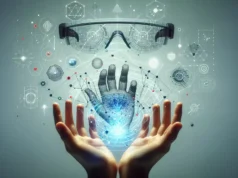Lately, the intersection between media and technology has been brewing up a storm of exciting developments. The phase of passive media consumption seems to be fading away, thanks to cutting-edge technology. Once, there were days when media platforms such as television, newspapers, and radio reigned supreme, and the audience’s role was simply to receive information. However, those days appear to be dwindling, we are standing on the brink of a technological revolution, that will democratize media access and reshape the patterns of media consumption across the globe.
Media, in all its myriad forms, is a powerful societal force, shaping minds, values, and perspectives. But until recently, there was a significant disparity in the access to and consumption of media. Often the marginalized sections of society were overlooked and unheard. The question of inclusivity in media has been knocked around for years, but the revolutionary stance that technology is currently taking is all set to redefine it altogether.
The advent of the internet played a key role in the first wave of transformation by allowing digitization of traditional media. The proliferation of smartphones further pushed consumption of media to a personal space. The next wave of transformation is being propelled by advances in technology such as Artificial Intelligence (AI), Augmented Reality (AR), Voice assistants, and so forth, that seek to make media accessible and immersive for all.
AI’s role is particularly significant in ramping up media inclusion. Machine learning algorithms can customize content according to the user’s requirements and facilitate AI-driven journalism. For instance, automatic speech recognition (ASR) can transcribe audio into text for individuals who are hard of hearing. For the visually impaired, AI can help text-to-speech, describe images and facilitate interactive voice assistance.
Machine learning algorithms can filter and distribute content globally and can even customize it according to regional tastes, cultural preferences, and filtering and thresholds defined by user’s consumption patterns. This ensures that everyone, regardless of language, region, and preferences, gets access to relevant media content, thereby democratizing media access to the fullest.
Then there’s augmented reality technology that immerses users in a simulated, interactive environment, making the consumption of media a more inclusive and experiential act. Such technology can create content that caters to diverse sensory inputs making media experience more extensive and universal.
Further, social media platforms, blog pages, podcasting platforms, and interactive communication channels have amplified people’s voices. Anyone can create and share content, adding to the growing stream of shared knowledge. This democratization means that media is no longer a one-way avenue, but an open forum where stories from all corners of the world can be heard.
Despite such substantial progress, barriers still exist and the road to fully inclusive media is still unfolding. Challenges such as digital literacy, infrastructural limitations, data privacy concerns, and the threat of misinformation pose significant hurdles in fully realizing this potential.
Nevertheless, technology continues to redefine the relationship between media and people, bridging the gap between the digital haves and the have-nots. It stands firm in its commitment to further the media divide, encourage diverse participation and create an inclusive, global conversation.
Underlying this mission is the urgent necessity to make technology and media accessible to all, thus promoting equality of participation at a global level. Democratization of media, facilitated by technology, is no more a distant dream. It is gradually turning into reality, and the future of media sounds promising.
Source:
1. “Artificial Intelligence: Implications for the Future of Journalism”. European Journalism Observatory. https://en.ejo.ch/digital-news/artificial-intelligence-the-implications-for-the-future-of-journalism
2. “Revolutionizing Media Through AI”. Forbes. https://www.forbes.com/sites/forbestechcouncil/2019/10/16/revolutionizing-media-industry-through-ai-heres-what-to-expect/
3. “Unlocking the Promise of Augmented Reality”. Harvard Business Review. https://hbr.org/2020/01/unlocking-the-promise-of-augmented-reality
4. “The impact of data access on democracy, development, and the global economy”. Brookings. https://www.brookings.edu/research/the-impact-of-data-access-on-democracy-development-and-the-global-economy/






